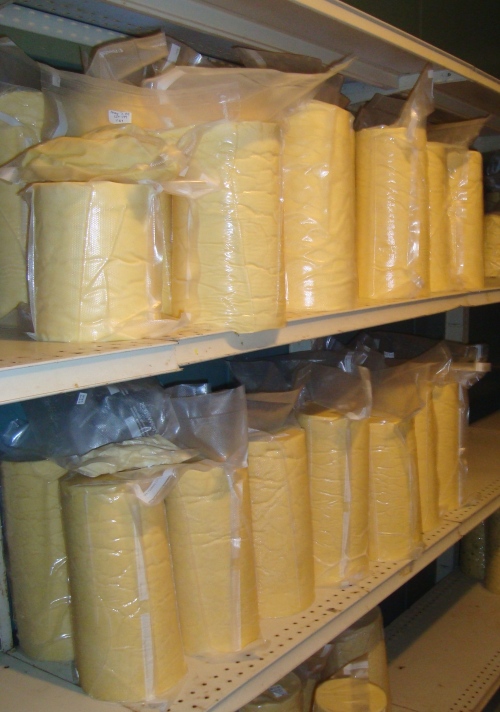
 Cold spell is back, and so are the hot pots. Eddy and I love to make kimchee hot pots when the weather gets cold. They are easy to make, you can eat LOTS of veggies, and you start sweating in no time.
Cold spell is back, and so are the hot pots. Eddy and I love to make kimchee hot pots when the weather gets cold. They are easy to make, you can eat LOTS of veggies, and you start sweating in no time.
This week we made a hot pot using kimchee made right here in Little Rock. The ladies at the Sam’s Oriental Store make them every week, and they are FANTASTIC!!! An added bonus – they reuse the glass jars that kimchee come in. Simply wash and return to the store after you finish eating. Isn’t it great?
We also thew in pork from the Petit Jean Farm, Napa cabbage and green onions from the Armstead Mountain Farm, and shiitake mushrooms from the Arkansas Natural Produce. YUM, YUM!!! The next day we used the leftover soup to make kimchee udon. Mmm…. we were in heaven!
Friday Eddy and I hosted the Arkansas Earth Institute Discussion Course After Party. Recently we finished taking the Voluntary Simplicity course, and we decided to celebrate the great time that we had by throwing a party. Thanks, everyone, for coming! Since we still have TONS of Arkansas strawberries, blueberries and blackberries, we decided to make mixed berry ice cream using the stored berries as well as our chickens’ eggs. It turned out great! We also made orange pecans using Arkansas pecans that we stored last fall. They were yummy as well!
What have you been eating lately? Share by leaving a comment! And now, here is the roundup for this past week.
Sunday
Breakfast – homemade whole wheat & rye pancakes made with homegrown eggs & AR pecans, topped with AR honey, homegrown eggs, AR sausage, home roasted coffee
Lunch – organic bow-tie pasta with homemade pesto made with AR basil & garlic
Dinner – homemade minestrone with Swiss chard & beans made with AR tomatoes & Swiss chard, pecan mashed sweet potatoes made with AR sweet potatoes & pecans, sauteed asparagus
Monday
Breakfast – organic War Eagle Mill (WEM) oatmeal with WEM flax and AR pecans, honey & honeybee pollen, banana, home roasted coffee
Lunch – organic udon with AR kale, homemade miso soup
Dinner – homemade stir-fried Asian vegetables made with AR cabbage, shiitake mushrooms & Napa cabbage, organic AR rice, homemade miso soup, home brewed beer
Tuesday
Breakfast – organic WEM oatmeal with WEM flax and AR pecans, honey & honeybee pollen, banana, home roasted coffee
Lunch – organic bow-tie pasta with homemade pesto made with AR basil & garlic
Dinner – dinner at Bosco’s (Thanks, Leah & Jason!)
Wednesday
Breakfast – organic WEM oatmeal with WEM flax and AR pecans, honey & honeybee pollen, banana, home roasted coffee
Lunch – homemade mustard green gratin, pecan mashed sweet potatoes made with AR sweet potatoes & pecans, arugula & radish salad made with AR arugula
Dinner – Mexican at El Dorado
Thursday
Breakfast – organic WEM oatmeal with WEM flax and AR pecans, honey & honeybee pollen, banana, home roasted coffee
Lunch – at Master Gardener’s class
Dinner – homemade Korean kimchee hot pot made with locally-made kimchee and AR pork, Napa cabbage, shiitake mushrooms & green onions, homemade miso soup, organic AR rice, mixed green salad made with AR greens, topped with homemade miso vinaigrette, home brewed beer
Friday
Breakfast – homemade whole wheat & rye pancakes made with homegrown eggs & AR pecans, topped with AR honey, banana, AR sausage, home roasted coffee
Lunch – organic udon with leftover Korean kimchee soup, veggie dumplings
Dinner – homemade hummus, mixed berry ice cream made with homegrown eggs and AR milk, strawberries, blueberries & blackberries, orange pecans made with AR pecans, homemade goat cheese made with AR goat milk, homemade bread, Boulevard 8-grain bread, crackers, tofu spread from The Station, olives, Blueberry Hill cheese, taro chips, cookies, home brewed beer, wine, home roasted coffee, tea (Thanks, everyone, for coming and bringing stuff!)
Saturday
Breakfast – homemade French toast made with homemade bread, homegrown eggs, topped with AR honey, home roasted coffee
Lunch – pork ribs at the Storm on the Water Barbecue Contest at the Clinton Library (Thanks, Adam, for treating us!)
Dinner – too full from the barbecue contest to eat 🙂






 The ROOT Cafe presents Summer Food Preservation Workshops!
The ROOT Cafe presents Summer Food Preservation Workshops!

















 Cold spell is back, and so are the hot pots. Eddy and I love to make kimchee hot pots when the weather gets cold. They are easy to make, you can eat LOTS of veggies, and you start sweating in no time.
Cold spell is back, and so are the hot pots. Eddy and I love to make kimchee hot pots when the weather gets cold. They are easy to make, you can eat LOTS of veggies, and you start sweating in no time.











